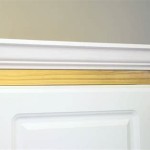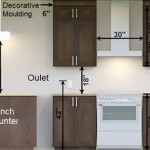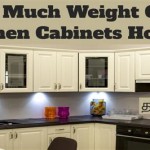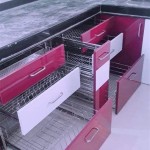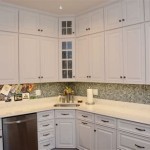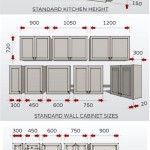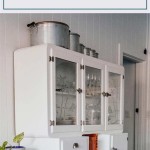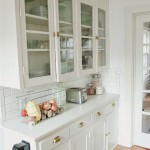Chicago Kitchen Cabinets: A Comprehensive Guide to Selection and Style
The kitchen is often considered the heart of a home, and kitchen cabinets play a pivotal role in both its functionality and aesthetic appeal. In Chicago, a city known for its diverse architectural styles and discerning homeowners, the selection of kitchen cabinets requires careful consideration. This article provides a comprehensive guide to understanding the factors involved in choosing the right kitchen cabinets for a Chicago home, covering aspects from materials and styles to installation and maintenance.
Understanding Cabinet Construction
The construction of kitchen cabinets significantly impacts their durability and longevity. There are several primary construction methods to consider, each with its own advantages and disadvantages. These methods primarily revolve around the type of materials used for the cabinet box, doors, and drawer fronts.
Plywood Cabinets: Plywood cabinets are often favored for their strength and resistance to warping, especially in humid environments. High-quality plywood typically consists of multiple layers of wood veneer glued together, providing a stable and robust structure. Plywood is less susceptible to expansion and contraction compared to solid wood, making it a reliable choice for Chicago's varying climate conditions.
Particleboard Cabinets: Particleboard is an engineered wood product made from wood chips and resin. While generally more affordable than plywood, it is also less durable and more prone to damage from moisture. Particleboard cabinets are often used in budget-friendly kitchens, but they may not be the best choice for long-term performance or in areas prone to high humidity.
MDF (Medium-Density Fiberboard) Cabinets: MDF is another engineered wood product that is denser and more stable than particleboard. It offers a smooth surface, making it ideal for painting and providing a uniform look. MDF is less prone to warping than solid wood but can still be damaged by prolonged exposure to moisture. It is a good middle-ground option for homeowners seeking a balance between cost and durability.
Beyond the cabinet box material, the methods used to join the various pieces together also play a crucial role. Dovetail joints, for example, are known for their strength and are often used in high-quality drawer construction. Other joining methods include dadoes, rabbets, and screws with glue. The quality of the joinery directly impacts the cabinet's ability to withstand daily use and stress.
Exploring Cabinet Styles
The style of kitchen cabinets is a key element in defining the overall aesthetic of the kitchen. Chicago's diverse architectural landscape means that a wide range of cabinet styles are popular, from traditional to modern and everything in between. Understanding the different styles and their characteristics can help homeowners make informed decisions that complement their homes' architectural style and personal preferences.
Shaker Cabinets: Shaker cabinets are characterized by their simple, clean lines and recessed panel doors. This style is versatile and can be adapted to both traditional and modern kitchens. The Shaker style emphasizes functionality and understated elegance, making it a popular choice for Chicago homeowners seeking a timeless look.
Flat-Panel Cabinets: Flat-panel cabinets, also known as slab cabinets, feature a minimalist design with no ornamentation. They are a hallmark of modern and contemporary kitchens, offering a sleek and uncluttered appearance. Flat-panel cabinets often pair well with minimalist hardware and clean countertops, creating a streamlined aesthetic.
Raised-Panel Cabinets: Raised-panel cabinets are characterized by a central panel that is raised above the surrounding frame. This style is more traditional and ornate than Shaker or flat-panel cabinets, often featuring decorative details and molding. Raised-panel cabinets can lend a sense of formality and sophistication to a kitchen.
Glass-Front Cabinets: Glass-front cabinets feature glass doors that allow homeowners to display their dishes, glassware, or decorative items. These cabinets can add visual interest and depth to a kitchen. Glass-front cabinets are often used in combination with other cabinet styles to create a balanced and personalized design.
Custom Cabinets: For homeowners with specific design requirements or unique space constraints, custom cabinets offer the flexibility to create a truly personalized kitchen. Custom cabinet makers can design and build cabinets to fit any space and incorporate specific features or functionalities. This option is typically more expensive but allows for unparalleled design control.
Selecting the Right Materials and Finishes
The materials and finishes used for kitchen cabinets contribute significantly to their aesthetic appeal and overall durability. Different materials offer different looks, textures, and performance characteristics. Likewise, the finish of the cabinets can greatly influence their style and resistance to wear and tear.
Wood Species: The type of wood used for cabinet doors and drawer fronts can significantly impact their appearance and cost. Common wood species for kitchen cabinets include maple, oak, cherry, and walnut. Maple is a popular choice due to its smooth grain and ability to take paint and stain well. Oak is known for its durability and distinctive grain pattern. Cherry offers a rich, warm color and is often used for more formal kitchens. Walnut is a premium wood with a beautiful, dark color and elegant grain pattern.
Painted Finishes: Painted cabinets offer a wide range of color options and can create a clean, modern look. High-quality painted finishes are durable and resistant to chipping and scratching. The finish is often applied in multiple layers with a clear coat for protection. White and gray are popular choices for painted cabinets, but homeowners can choose from a vast array of colors to match their personal style.
Stained Finishes: Stained cabinets highlight the natural beauty of the wood grain. Staining allows the wood's texture and character to shine through, creating a warm and inviting look. Stain colors range from light and natural to dark and rich. A protective topcoat is typically applied to stained cabinets to protect the finish from wear and tear.
Laminate Finishes: Laminate is a cost-effective option that offers a wide range of colors and patterns. Laminate cabinets are durable and easy to clean, making them a practical choice for busy kitchens. Laminate can mimic the look of wood or other materials, providing a versatile aesthetic option.
The hardware selected for kitchen cabinets, such as knobs and pulls, also plays a role in the overall design. Hardware comes in a variety of styles, materials, and finishes, allowing homeowners to customize the look of their cabinets and coordinate with other kitchen elements.
The Importance of Professional Installation
Even the highest quality kitchen cabinets will not perform well if they are not installed properly. Professional installation ensures that cabinets are level, plumb, and securely attached to the walls. A poorly installed cabinet can lead to problems such as uneven doors, difficulty opening and closing drawers, and structural instability. Engaging a qualified and experienced installer is crucial for ensuring a successful kitchen renovation project.
Professional installers have the tools and expertise to handle the complexities of cabinet installation, including dealing with uneven walls or floors, plumbing and electrical considerations, and proper alignment of cabinet doors and drawers. They can also ensure that cabinets are properly secured to the wall studs, providing a stable and safe installation.
In Chicago, where many homes have unique architectural features or older construction, professional installation is particularly important. Experienced installers can navigate the challenges of working in older homes and ensure that the cabinets are installed correctly and securely.
Furthermore, professional installers often provide warranties on their work, giving homeowners peace of mind that any issues that arise after installation will be addressed promptly and effectively. While DIY cabinet installation may seem like a cost-saving option, the potential for errors and the lack of warranty coverage can ultimately lead to more expense and frustration in the long run.
Cabinet Care and Maintenance
Proper care and maintenance are essential for extending the life of kitchen cabinets and keeping them looking their best. Regular cleaning and preventative measures can help protect cabinets from damage and ensure that they continue to function properly for years to come.
Cleaning: Regular cleaning is essential for removing dirt, grease, and spills that can accumulate on cabinet surfaces. A mild soap and water solution is generally sufficient for cleaning most cabinet finishes. Avoid using abrasive cleaners or harsh chemicals, which can damage the finish. It is also important to dry the cabinets thoroughly after cleaning to prevent water damage.
Preventing Moisture Damage: Moisture is a common enemy of kitchen cabinets, especially in Chicago's humid climate. Promptly wipe up any spills and avoid leaving standing water on cabinet surfaces. Ensure that the kitchen is properly ventilated to prevent excess moisture buildup. Consider using a dehumidifier in areas prone to high humidity.
Hardware Maintenance: Regularly check the cabinet hardware, such as knobs, pulls, and hinges, and tighten any loose screws. Lubricate hinges as needed to ensure smooth operation. Replace any damaged hardware promptly to prevent further damage to the cabinets.
Protecting from Heat and Sunlight: Prolonged exposure to heat and sunlight can cause cabinet finishes to fade or yellow over time. Avoid placing cabinets directly next to heat sources, such as ovens or stoves. Consider using window coverings to protect cabinets from direct sunlight.
By following these simple care and maintenance tips, homeowners can help keep their kitchen cabinets looking beautiful and functioning properly for many years to come. This proactive approach can save money in the long run by preventing costly repairs or replacements.

Chicago Kitchen Cabinets Premium

Chicago Kitchen Cabinets Premium

Chicago Kitchen Cabinets Premium

Andersonville Kitchen And Bath Chicago Remodeling Design Showroom For Planning Showcasing Cabinetry Vanities Quartz Countertops Undercabinet Lighting

Inset Kitchen Cabinets In Chicago Illinois Wheatland Custom Cabinetry Woodwork

Plain Fancy Chicago Custom Cabinetry Kitchens Bath Closets

Popular Kitchen Design Trends In Chicago Habitar Interior

Custom Modern Cabinets At Glenview Haus Chicago Il By Ernestrust Usa

Project Reveal Warm Bright Kitchen Design With Storage Galore Inside

Chicago Kitchen Cabinets Premium
Related Posts

